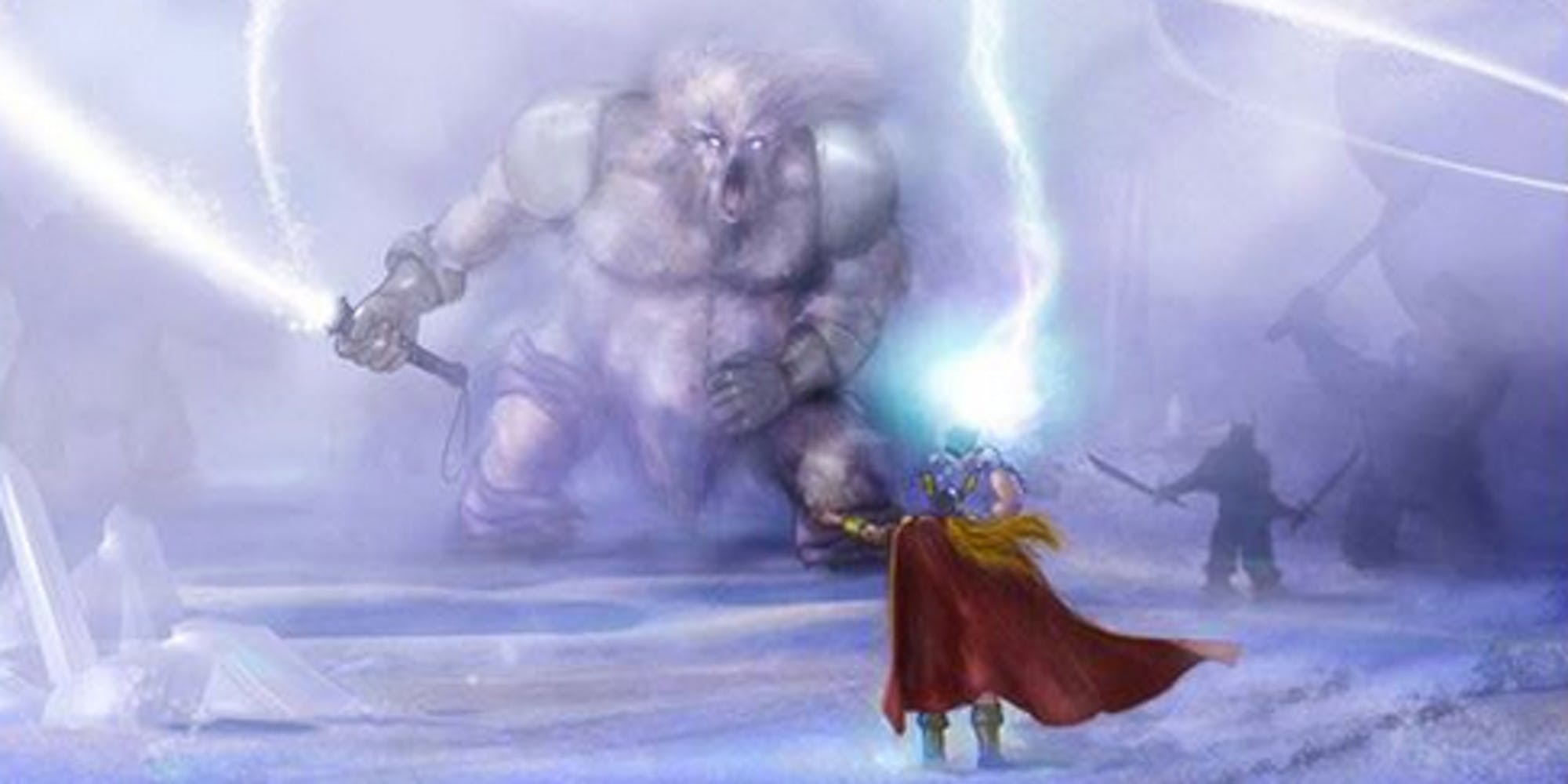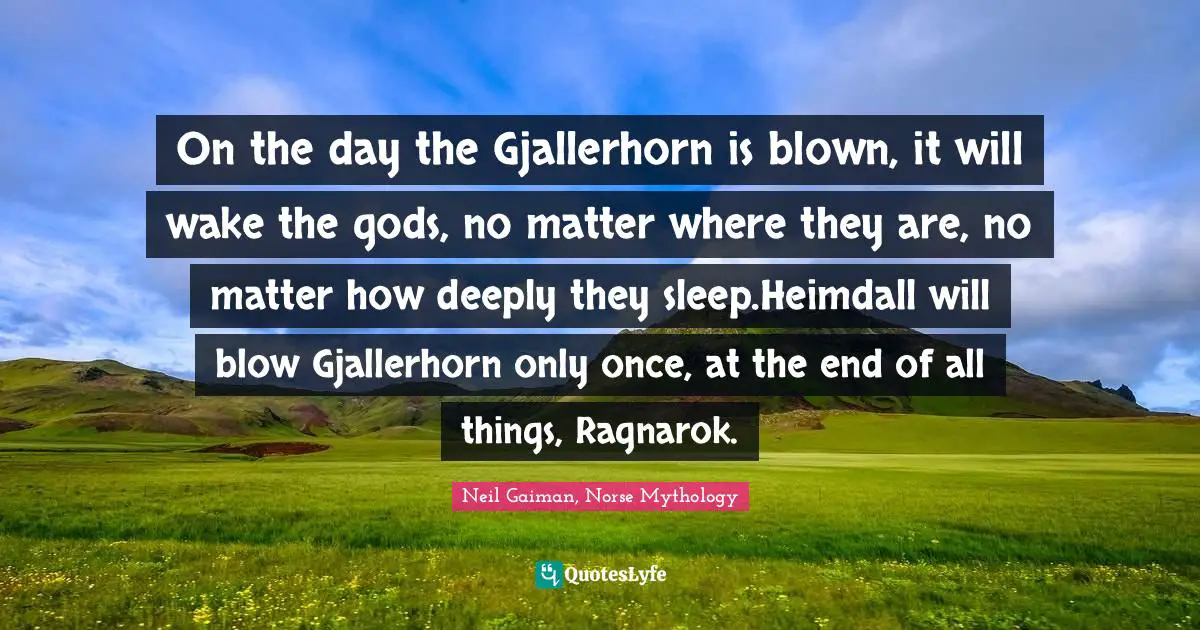
This is how we will know that the end times are upon us. These are dark days I will tell you of, dark days and hidden things, concerning the ends of the earth and the death of the gods. I shall tell you how it will end, and then how it will begin once more.
Now I shall tell you of the days to come. 
 Neil Gaiman, in Norse Mythology (2017), The Story of Gerd and Frey.
Neil Gaiman, in Norse Mythology (2017), The Story of Gerd and Frey. 
When the sky splits asunder and the dark powers of Muspell march out on their war journey, Frey will wish he still had his sword.
Neil Gaiman, in Norse Mythology (2017), Mimir’s Head and Odin’s Eye. Heimdall will blow the Gjallerhorn only once, at the end of all things, at Ragnarok. On the day the Gjallerhorn is blown, it will wake the gods, no matter where they are, no matter how deeply they sleep. Odin gave the Gjallerhorn to Heimdall, watchman of the gods. Ragnarök, in Norse mythology, is a series of prophesied events, including a great battle and various natural disasters, foretold to ultimately result in the death of a number of major figures (including the gods Odin, Thor, Týr, Freyr, Heimdallr, and Loki). Through Gaiman's deft and witty prose emerge these gods with their fiercely competitive natures, their susceptibility to being duped and to duping others, and their tendency to let passion ignite their acttions, making these long-ago myths breathe pungent life again.On the day the Gjallerhorn is blown, it will wake the gods, no matter where they are, no matter how deeply they sleep. The work culminates in Ragnarok, the twilight of the gods and rebirth of a new time and people. More poignant is the tale in which the blood of Kvasir - the most sagacious of gods - is turned into a mead that infuses drinkers with poetry. Once, when Thor's hammer is stolen, Thor must disguise himself as a woman - difficult with his beard and huge appetite - to steal it back. 
Gaiman fashions these primeval stories into a novelistic arc that begins with the genesis of the legendary nine worlds and devles into the exploits of deities, dwarfs, and giants. In Norse Mythology, Gaiman stays true to the myths in envisioning the major Norse pantheon: Odin, the highest of the high, wise, daring, and cunning Thor, Odin's son, incredibly strong yet not the wisest of gods and Loki - son of a giant - blood brother to Odin and a trickster and unsurpassable manipulator. Now he turns his attention back to the source, presenting a bravura rendition of the great northern tales. Summary: Neil Gaiman has long been inspired by anicent mythology in creating the fantastical realms of his fiction.








 0 kommentar(er)
0 kommentar(er)
